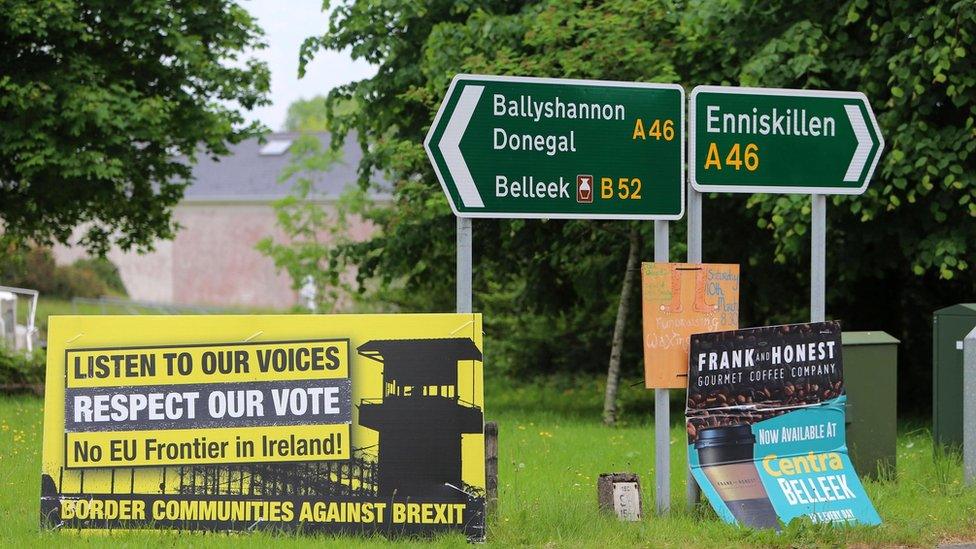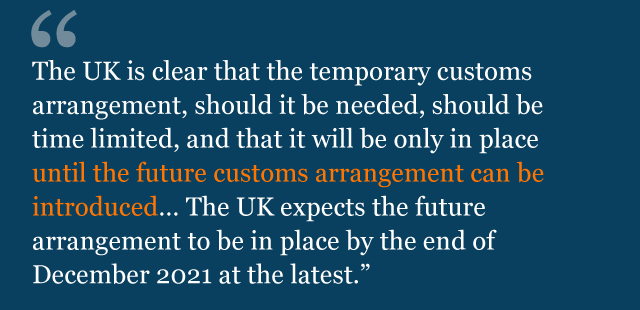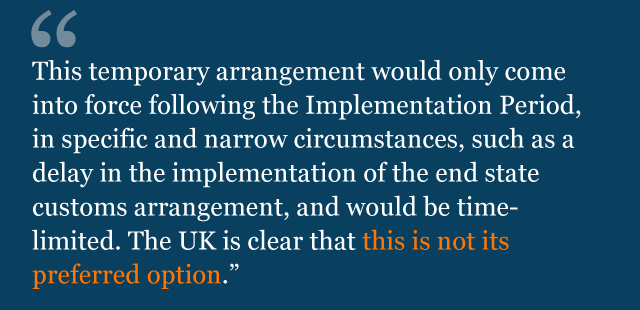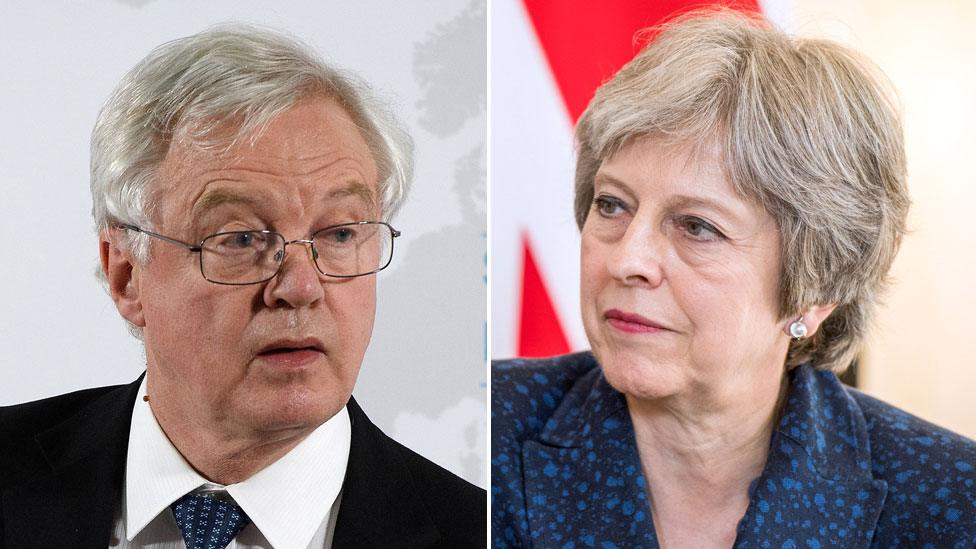Reality Check: What do Brexit backstop proposals mean?
- Published

The UK has published a paper setting out its "backstop" proposals for customs arrangements with the EU, if a new permanent deal is not ready in time.
(A backstop, by the way, is used in baseball - it's a fence or screen behind the catcher, designed to stop the ball leaving the area if it's not hit or caught. So, for the purposes of Brexit, think of something along the lines of a safety net.)
The aim is to avoid a hard border in Ireland.
Here are a few key quotes from the UK proposal, external.

The UK said it couldn't accept the EU's initial proposal for a backstop because it would apply to Northern Ireland only, and - in effect - create a customs border between Northern Ireland and the rest of the UK (and that would be unacceptable for, among others, Northern Ireland's Democratic Unionist Party whose support Theresa May relies on in the Commons).
So the UK has said a "temporary customs arrangement" should apply to the UK as a whole, keeping the entire country in a customs union with the EU for a limited period after the end of the proposed Brexit transition period in December 2020.
It would involve the elimination of "tariffs, quotas, rules of origin and customs processes including declarations on all UK-EU trade".
![The UK [would be] able to negotiate, sign and ratify free trade agreements (FTAs) with rest of world partners and implement those elements that do not affect the functioning of the temporary customs arrangement.](https://ichef.bbci.co.uk/ace/standard/640/cpsprodpb/9292/production/_101922573_backstop_text2-nc.png)
In order to encourage supporters of Brexit to accept this proposal, the government emphasises that the UK would be able to sign and ratify trade agreements with the rest of the world during the temporary customs arrangement.
But it will only be able to implement "those elements" that do not affect the way those arrangements work, which means, in effect, only agreements on services because all trade in goods would be part of the extended customs union.

This is a key passage right at the end, which tries to keep everyone happy.
All sides say they hope the backstop can be avoided, but realistically they need something in place to keep the show on the road once the post-Brexit transition expires at the end of 2020.
The government says the arrangement should be temporary and it expects a permanent solution will be in place a year later, by the end of December 2021 at the latest.
"Expects" is a key word here. This is not a cast-iron end date, because the EU would not be willing to accept that.
But it tries to reassure supporters of Brexit that this is not a slippery slope towards indefinite membership of the customs union.

For those who don't much like the whole idea of the backstop, the government is saying "don't worry, nor do we".
It would only come into force after the implementation (or transition) period, if absolutely necessary.
The trouble, from the government's perspective, is that it almost certainly will be necessary.
Very few people think there's any hope that a permanent settlement, or the infrastructure needed to implement it, will be ready by the end of 2020.

There is also this acknowledgement in the text that ensuring there is no hard border between Northern Ireland and the Irish Republic requires much more than an agreement on customs.
The EU's backstop proposal would keep Northern Ireland in the single market for goods, ensuring that rules and regulations on things like animal welfare and food safety remain the same on both sides of the border.
The UK agrees that single market issues - or regulatory standards - will need to be addressed and that these proposals on customs don't actually do that.



- Published7 June 2018

- Published7 June 2018